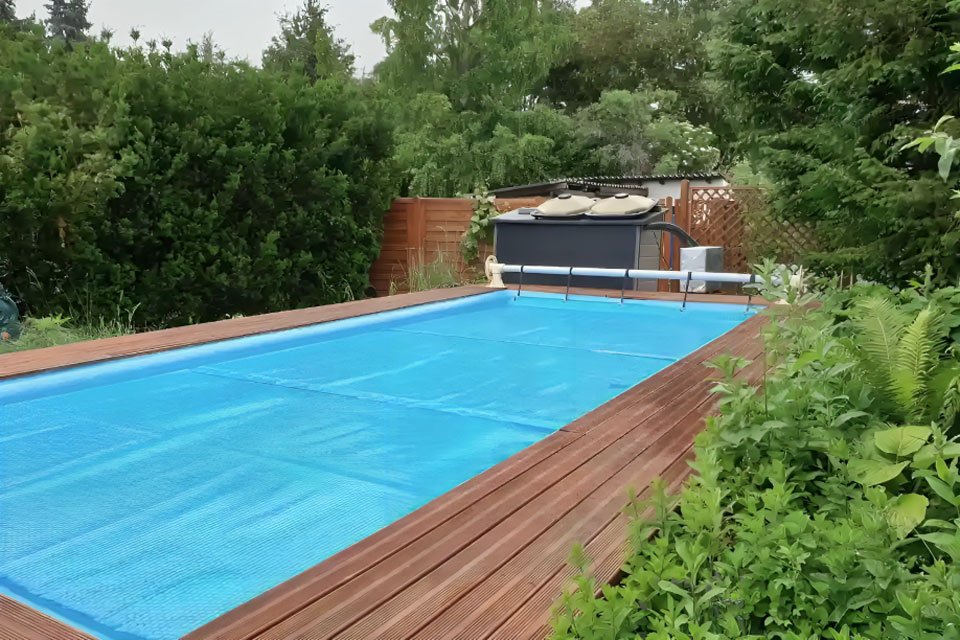How to Winterise a Pool: Essential Tips for Pool Owners

As the leaves turn golden and the air grows crisp, it’s clear that summer’s warmth is fading, ushering in the need for pool owners to think about winterising their pools. This crucial step in pool maintenance is not just about saying goodbye to those relaxing days in the water; it’s a strategic move to safeguard your aquatic haven.
So, let’s gear up and explore how you can adeptly prepare your pool for the cooler months ahead, ensuring a seamless transition into the next season of sun and fun.
Winterisation of Pools: An overview
What is Pool Winterisation?
Pool winterisation is the process of preparing your swimming pool for the off-season, particularly in the colder months when it’s not in use. Think of it as tucking your pool in for a long winter’s nap.
It involves a series of steps to reduce maintenance needs, protect the pool from potential damage due to freezing temperatures, and ensure that the water quality remains balanced even when it is not used.
Why Winterise Your Pool?
Now, you might wonder, why go through all this effort?
The answer lies in the numerous benefits of winterisation. Firstly, it’s a cost-effective strategy. You save significantly on energy bills by scaling back on heating and filtration.
Proper winterisation extends the lifespan of your pool equipment. Without it, you risk facing algae growth, potential freeze damage, and a hefty clean-up bill come spring.
Moreover, a proactive approach to pool care ensures your pool is ready to go without any hiccups when the warm weather returns.
Preparing for Pool Winterisation
When to Start
Timing is everything when it comes to pool winterisation. The ideal period to start this process is when the daily temperatures consistently begin to drop below 18 degrees Celsius. Which typically occurs in late autumn, just before the onset of the cold winter months.
Starting too early can lead to algae problems due to warmer temperatures while starting too late can risk damage from early frosts.
Essential Tools and Supplies
Equipping yourself with the right tools and supplies is the first step in this seasonal transition.
Here’s what you’ll need:
- A quality pool cover: This is non-negotiable. It keeps out debris and reduces light penetration, minimising algae growth.
- Algaecide and chlorine:To keep the water clear and algae at bay.
- Water testing kit:Essential for checking pH, alkalinity, and chlorine levels.
- Pool vacuum and net:For cleaning out leaves and other debris.
- Air compressor or shop vac: Handy for blowing out water from your plumbing lines.
- Antifreeze (for colder regions): This is crucial if there’s a risk of water in the pipes freezing.
- Pool filter cleaner: Ensure your pool filter is in top condition for the next season.
Step-by-Step Guide to Winterising Your Pool
It might seem overwhelming to begin winterising your pool, but it won’t be too hard if you take the right steps. Let’s walk through this process together.
Cleaning and Removing Accessories
First things first, let’s clear the stage. Remove all pool accessories – ladders, toys, pumps, and cleaning equipment. Give them a good clean and store them away. Next up, it’s time for a thorough pool cleaning. Remove debris, leaves, and algae from the pool by skimming, vacuuming, and brushing.
Balancing Water Chemistry

Balanced water chemistry is the cornerstone of a healthy pool. About a week before you plan to close the pool, test and adjust your water. Aim for a pH level between 7.2 and 7.6, alkalinity between 80 and 120 parts per million, and calcium hardness around 200 to 400 ppm. This balance is crucial to protect your pool from corrosion and scale buildup during winter.
Lowering the Water Level
Lower the water level to about 10-15 cm below the skimmer for in-ground pools. For above-ground pools, drop it just below the return line. This step is vital to prevent damage from freezing and expanding water.
Draining and Storing Equipment
Drain water from your pump, filter, heater, and chlorinator. If you’re in an area prone to freezing, blow out the lines using an air compressor or shop vac and plug them in. Store all removable equipment in a dry, safe place.
Adding Shock and Algaecide
Before you say goodbye to your pool for the winter, give it a good shock treatment – this will kill any lingering bacteria and algae. After the shock has done its job, add an algaecide to prevent any green surprises in the spring. Patience is key here; allow the shock to work overnight before adding the algaecide.
Covering the Pool
Finally, it’s time to tuck your pool in. Choose a quality pool cover that fits snugly. Consider a safety cover for extra security and debris protection for in-ground pools. Secure the cover tightly to prevent debris from getting in and reduce the risk of water accumulation on top.
And there you have it, a step-by-step guide to winterising your pool. With these steps, you’re not just closing your pool but setting the stage for a hassle-free reopening when the warm weather returns.
Special Considerations for Different Pool Types
Every pool has its own personality; just like people, they need tailored care. Let’s explore what this means for different types of pools.
In-Ground Pools
In-ground pools, the classic backyard beauties, require a bit of finesse when winterising. Key steps include lowering the water level but not completely draining it, which can cause structural damage. To avoid freeze damage, drain all pipes and the pump system thoroughly.
If you have a vinyl liner, be gentle when cleaning and avoid harsh chemicals that can cause damage. For concrete pools, check for any cracks and repair them before covering the pool. A safety cover is a great investment for in-ground pools, offering protection and peace of mind.
Above-Ground Pools
On the other hand, above-ground pools have their own rules. You should lower the water level slightly but not completely drain it. Use an air pillow under the cover to protect the structure from expanding ice. Disconnect and drain all hoses and the filter system. If you’re in an area with harsh winters, consider dismantling and storing the pool to protect it from the elements.
Maintaining Your Pool During Winter
Even in the quiet of winter, your pool needs some attention. Periodically check the pool cover for damage or water accumulation and pump it off as needed. Keep an eye on the water level and chemistry; a mid-winter check can save you from surprises in the spring. If you’re in an area with heavy snowfall, gently remove snow from the pool cover to avoid excess weight and potential damage.
Conclusion
Winterising your pool is more than a chore; it’s an investment in your summer joy. Following this guide sets the stage for a seamless and carefree pool opening when the warm days return.
If you’re unsure about any steps or need professional assistance, don’t hesitate to contact a professional pool builder. Having your pool winterised properly can save time and prevent potential issues. Reach out today for expert help with your pool winterising needs!



